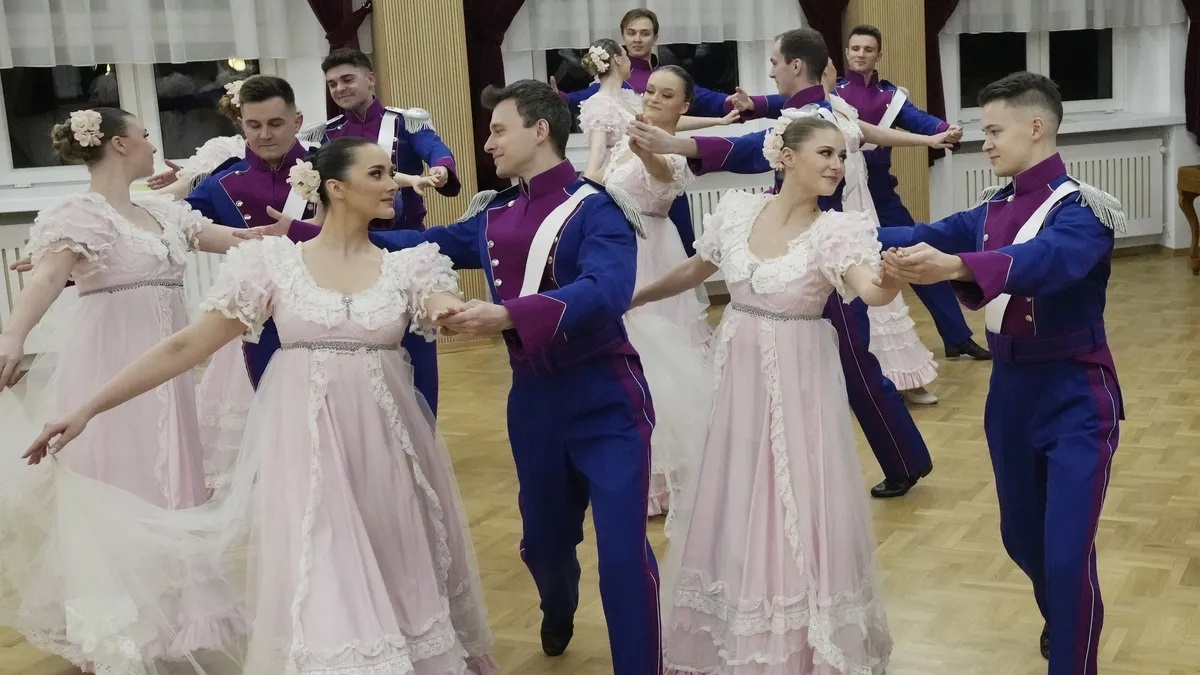
The Polonaise is a majestic and dignified dance that holds a significant place in the realm of performing arts. Originating in Poland, this stately dance form has captivated audiences for centuries with its regal movements and stirring melodies. As we delve into the world of the Polonaise, it's essential to uncover the fascinating facts that underpin its rich history and enduring appeal. From its royal associations to its influence on classical music, the Polonaise embodies a cultural legacy that continues to inspire and enthrall. Join us as we unravel the captivating allure of the Polonaise and gain a deeper understanding of this iconic dance form.
Key Takeaways:
- The Polonaise, a dignified dance from Poland, symbolizes national pride and resilience, inspiring ballet and global appreciation. Its rich history and cultural significance continue to captivate audiences worldwide.
- Renowned composer Chopin elevated the Polonaise with emotive melodies, leaving an indelible mark on its legacy. This regal dance form unites people in joyous celebrations, forging lasting memories steeped in elegance and unity.
Originated in Poland
The Polonaise, a dignified and stately dance, originated in Poland during the 16th century. It was initially known as a processional dance, often performed at formal events and royal courts. The dance's name is derived from the Polish word "polska," meaning "Polish," reflecting its national significance and cultural roots.
The Polonaise's distinctive rhythm and graceful movements have made it a cherished part of Polish heritage, symbolizing elegance and tradition. This dance form has transcended generations, retaining its cultural significance and captivating audiences worldwide.
Notable Composition by Chopin
Renowned composer Frédéric Chopin notably incorporated the Polonaise into his compositions, infusing the dance with emotive melodies and intricate piano arrangements. His compositions, such as the "Polonaise in A-flat major, Op. 53," exemplify the grandeur and expressive nature of this dance form.
Chopin's Polonaises are celebrated for their captivating blend of regal flair and emotional depth, showcasing the versatility and emotive power of the dance. Through his compositions, Chopin elevated the Polonaise to a revered status in the realm of classical music, leaving an indelible mark on its legacy.
Symbol of National Pride
The Polonaise holds a significant place in Polish culture, serving as a symbol of national pride and resilience. Its regal and dignified movements embody the spirit of the Polish people, reflecting their strength and unwavering determination in the face of adversity.
This dance form has been embraced as a cultural emblem, evoking a sense of unity and patriotism among the Polish populace. Whether performed in grand ballrooms or showcased in cultural events, the Polonaise continues to resonate as a poignant symbol of Polish identity and heritage.
Influence in Ballet
The Polonaise's grace and grandeur have left an indelible mark on the world of ballet, inspiring choreographers and dancers to incorporate its majestic movements into classical ballet performances. This dance form's elegant strides and noble posture have seamlessly integrated into the repertoire of classical ballet, enriching productions with its regal allure.
Choreographed sequences featuring the Polonaise showcase the dancers' poise and precision, accentuating the dance's inherent splendor. Its influence in ballet has contributed to the enduring legacy of the Polonaise, ensuring its enduring presence on the global stage of performing arts.
Cultural Significance in Festivities
The Polonaise has become an integral part of celebratory events and cultural festivities in Poland, where it is often performed during national holidays, weddings, and formal gatherings. Its inclusion in these joyous occasions underscores its role as a cherished tradition, uniting participants in graceful and synchronized movements.
The dance's presence in festive gatherings reflects its enduring appeal and cultural resonance, fostering a sense of communal joy and camaraderie. As participants partake in the Polonaise, they honor tradition and celebrate the rich tapestry of Polish culture, forging lasting memories steeped in elegance and unity.
Global Appreciation and Adaptation
Beyond its origins in Poland, the Polonaise has garnered global appreciation and has been adapted into various artistic expressions, including music, dance, and theatrical performances. Its regal charm and evocative allure have transcended borders, captivating audiences worldwide and inspiring creative interpretations across diverse artistic disciplines.
The Polonaise's enduring appeal has led to its integration into international cultural showcases and collaborative artistic endeavors, fostering cross-cultural exchanges and mutual appreciation. As it continues to resonate with audiences across the globe, the Polonaise stands as a testament to the enduring power of artistic expression and cultural exchange.
The Polonaise's rich history, cultural significance, and enduring legacy underscore its profound impact on the world of performing arts, transcending boundaries and captivating the hearts and minds of audiences across generations.
Conclusion
In conclusion, the Polonaise is a captivating and historically significant dance form that has left an indelible mark on the world of performing arts. Its rich cultural heritage, distinctive rhythm, and elegant movements continue to inspire dancers and audiences alike. By understanding the six essential facts about the Polonaise, one can gain a deeper appreciation for its enduring legacy and its enduring impact on the world of dance and music.
FAQs
What is the origin of the Polonaise?
The Polonaise originated in Poland during the 16th century and was initially a lively folk dance before evolving into a stately court dance.
What are the key characteristics of the Polonaise?
The Polonaise is characterized by its moderate tempo, triple meter, and distinctive rhythmic pattern, often accompanied by grand and graceful movements.
How has the Polonaise influenced music and culture?
The Polonaise has had a profound influence on classical music, particularly in the works of renowned composers such as Chopin and Tchaikovsky, and continues to be celebrated as a symbol of Polish national identity.
Was this page helpful?
Our commitment to delivering trustworthy and engaging content is at the heart of what we do. Each fact on our site is contributed by real users like you, bringing a wealth of diverse insights and information. To ensure the highest standards of accuracy and reliability, our dedicated editors meticulously review each submission. This process guarantees that the facts we share are not only fascinating but also credible. Trust in our commitment to quality and authenticity as you explore and learn with us.


